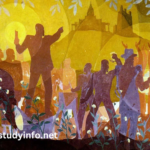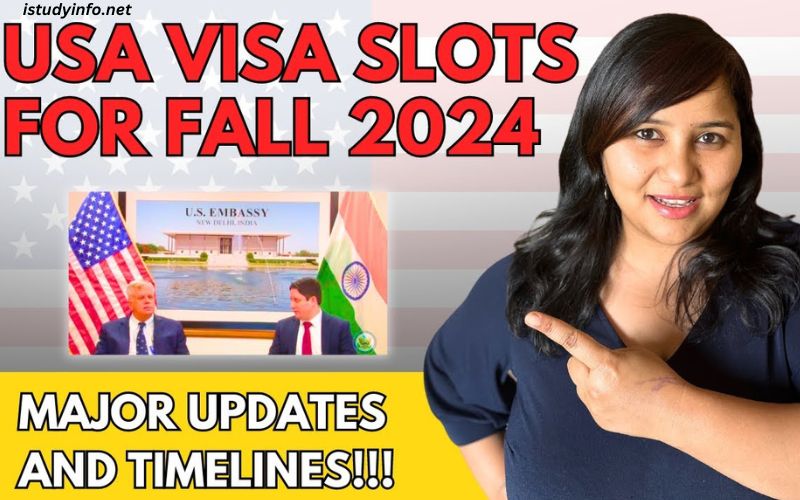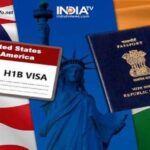The Importance of the F1 Visa
The F1 visa is essential for any international student wishing to study full-time at an accredited U.S. college, university, seminary, conservatory, academic high school, elementary school, or other academic institution. It is also required for those enrolled in language training programs. The visa grants students the ability to stay in the U.S. for the duration of their academic program, provided they maintain their full-time student status and adhere to the visa regulations.
The F1 Visa Application Process
The F1 visa application process involves several steps, each of which must be carefully followed to ensure successful acquisition of the visa. The process begins with gaining admission to a U.S. educational institution and ends with the visa interview at a U.S. embassy or consulate.
1. Admission to a U.S. Institution
Before applying for an F1 visa, students must first be accepted into a U.S. academic institution that is approved by the Student and Exchange Visitor Program (SEVP). Once accepted, the institution will provide the student with a Form I-20, “Certificate of Eligibility for Nonimmigrant Student Status.” This form is a critical document for the visa application process, as it contains important details about the student’s program, finances, and personal information.
2. SEVIS Fee Payment
After receiving the Form I-20, the next step is to pay the SEVIS (Student and Exchange Visitor Information System) fee. This fee is mandatory for all F1 visa applicants and is used to fund the SEVIS program, which maintains information on non-immigrant students and exchange visitors. The fee can be paid online, and a receipt will be provided, which must be presented during the visa interview.
3. Completing the DS-160 Form
The DS-160 is an online non-immigrant visa application form that must be completed by all F1 visa applicants. The form requires detailed information about the applicant’s personal history, travel plans, and background. Once completed, the form generates a confirmation page with a barcode, which must be printed and brought to the visa interview.
4. Scheduling the Visa Interview
One of the most critical steps in the F1 visa application process is scheduling the visa interview at a U.S. embassy or consulate. Given the large number of students applying for visas, especially for the Fall 2023 semester, securing an interview slot can be challenging. It is advisable to schedule the interview as early as possible, as slots fill up quickly.
The visa interview appointment can be scheduled online or by contacting the embassy or consulate directly. During the scheduling process, the applicant will need to pay the non-refundable visa application fee, which is typically around $160.
Challenges in Securing F1 Visa Slots for Fall 2023
Securing an F1 visa slot for Fall 2023 comes with its unique set of challenges. The COVID-19 pandemic has caused disruptions in visa services worldwide, leading to backlogs and delays. Additionally, the high demand for visa slots, particularly from countries with a large number of international students, has made it increasingly difficult to secure interview appointments.
1. Increased Demand
The U.S. remains one of the most popular destinations for international students, leading to a high demand for F1 visas. For the Fall 2023 semester, this demand has been amplified as many students who deferred their plans due to the pandemic are now applying, creating a surge in the number of applicants.
2. Limited Availability of Visa Slots
U.S. embassies and consulates have been operating with limited capacity due to the pandemic, leading to a reduction in the number of available visa slots. This limitation has been particularly pronounced in countries with a high volume of applicants, such as India, China, and Brazil. As a result, students are facing longer wait times for interview appointments, which could jeopardize their ability to start their academic programs on time.
3. Technical Glitches and System Errors
Another challenge that has emerged in recent years is the occurrence of technical glitches and system errors during the visa slot booking process. Students have reported issues such as the website crashing, errors in payment processing, and incorrect appointment confirmations. These issues add an extra layer of stress and uncertainty for students who are already navigating a complex and time-sensitive process.
Tips for Securing an F1 Visa Slot for Fall 2023
Given the challenges outlined above, students must approach the F1 visa application process with careful planning and strategic thinking. Here are some tips to increase the likelihood of securing a visa slot for Fall 2023:
1. Start Early
One of the most effective ways to secure an F1 visa slot is to start the process as early as possible. This means obtaining the Form I-20, paying the SEVIS fee, and completing the DS-160 form well in advance of your desired interview date. The earlier you begin, the better your chances of finding an available visa slot.
2. Be Flexible with Interview Locations
If possible, consider scheduling your visa interview at a U.S. embassy or consulate in a different city or country where slots may be more readily available. While this may involve additional travel expenses, it could significantly reduce the waiting time for an interview. Some students have successfully secured visa slots by being flexible and exploring alternative locations.
3. Monitor the Embassy or Consulate Website Regularly
Visa slot availability can change rapidly, with new slots sometimes opening up unexpectedly. It is advisable to check the U.S. embassy or consulate website frequently to monitor for any new openings. Some students have found success by logging in during off-peak hours or by setting up notifications through third-party services that alert them when new slots become available.
4. Prepare All Required Documents in Advance
Ensure that all required documents are prepared and organized well before your visa interview. This includes your passport, Form I-20, DS-160 confirmation page, SEVIS fee receipt, visa application fee receipt, academic transcripts, financial documents, and any other supporting materials. Having everything ready will help streamline the interview process and reduce the risk of delays or complications.
5. Consider Working with a Visa Consultant
For students who are feeling overwhelmed by the visa application process, working with a visa consultant or immigration attorney may be beneficial. These professionals can provide guidance, assist with the application process, and help navigate any challenges that arise. While there is an additional cost associated with these services, the peace of mind and expertise they offer can be invaluable.
What to Expect During the Visa Interview
The visa interview is a critical step in the F1 visa application process. It is the final opportunity for the U.S. consular officer to assess whether the applicant meets the requirements for the visa. During the interview, the officer will ask questions about the applicant’s academic plans, financial situation, and intentions after completing their studies.
1. Common Interview Questions
Some common questions that applicants may be asked during the F1 visa interview include:
- Why do you want to study in the United States?
- Why did you choose this particular university or program?
- How do you plan to finance your education?
- What are your plans after completing your studies?
- Do you have any family members in the United States?
2. Dress Appropriately and Be Punctual
First impressions matter, so it is important to dress professionally and arrive on time for your visa interview. Being punctual shows respect for the consular officer’s time and reflects positively on your application.
3. Be Honest and Confident
During the interview, it is essential to answer all questions honestly and confidently. Consular officers are trained to identify inconsistencies or red flags, so it is important to be truthful and transparent about your intentions and plans. Confidence can also make a positive impression, so practice answering common questions beforehand to feel more prepared.
After the Visa Interview: Next Steps
If the visa is approved, the consular officer will provide information on when and how the passport with the visa will be returned. The processing time can vary, so it is advisable to make travel arrangements only after receiving the visa.
1. Traveling to the U.S.
Once the F1 visa is issued, students can make travel plans to the United States. It is important to note that F1 visa holders are allowed to enter the U.S. up to 30 days before the start of their academic program. Students should plan their arrival accordingly and ensure they have all necessary documents for entry.
2. Maintaining F1 Visa Status
After arriving in the U.S., it is crucial to maintain F1 visa status by adhering to the rules and regulations of the visa. This includes enrolling in a full course of study, not engaging in unauthorized employment, and reporting any changes in address or academic status to the designated school official (DSO).
Conclusion
Securing an F1 visa slot for Fall 2023 is a complex and often challenging process, but with careful planning and persistence, it is achievable. By understanding the steps involved, being proactive in scheduling the visa interview, and preparing thoroughly for the interview itself, students can increase their chances of success. Despite the obstacles posed by high demand














The very core of your writing while appearing reasonable initially, did not sit very well with me personally after some time. Somewhere throughout the paragraphs you actually were able to make me a believer unfortunately just for a very short while. I still have a problem with your jumps in assumptions and one might do well to help fill in all those breaks. In the event you actually can accomplish that, I will undoubtedly be impressed.